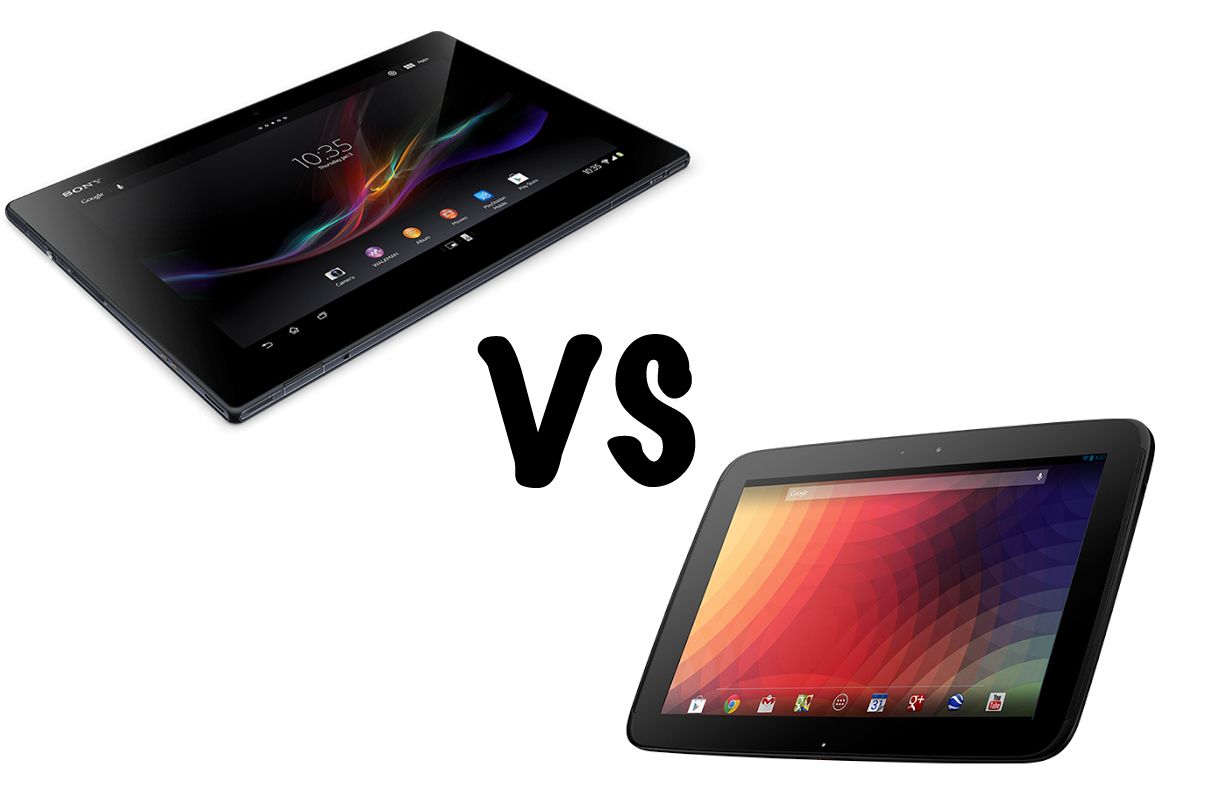The Nexus 10 was something of a breakthrough device, bringing with it a high-resolution display as well as a price that's fairly aggressive. But with Sony finding its stride with mobile design in 2013, the Sony Xperia Tablet Z is a serious competitor.
So which way should you turn if you're looking for a big screen Android tablet? Take the purity of the Nexus 10 or the pettiness of the Xperia Tablet Z? In short, which is the best tablet for you?
1. Display face-off
The display is essentially what a tablet is and the Nexus 10 has a super-sharp 10.1-inch PLS display with a resolution of 2560 x 1600. That's 300ppi, incredibly sharp for a tablet. The Xperia Tablet Z is also 10.1 inches, but has a resolution of 1920 x 1200 pixels. That's 224ppi, and you'll notice the difference using these tablets side by side, as the Nexus just looks better.
The Sony display is also noticeably warmer. Whites aren't as bright and clear, looking more yellow. Although this saturation boost colours, the Nexus 10 just looks more realistic.
2. Who's a lightweight?
Sony has poured a lot into the design of the Xperia Tablet Z and it shows. While the Nexus 10 is 8.9mm thick, the Sony tablet struts in at 6.9mm, making it incredibly slender. That's a real bonus when it comes to carrying the thing in your bag, but not as much as the weight: the Z weighs just 495g, whereas the Nexus is 603g.
In the hands, that's a weight you really feel when watching movies or playing games: the Sony tablet is a joy to handle.
3. Designed to dunk
If you like to take your tablet into the bath, then the Xperia Tablet Z is definitely the model to choose. With IPX5/7 certification, it doesn't mind submersion in water, so long as all the ports have their covers in place. That's a double-edged sword, however, as every time you want to charge it, you'll have to remove those covers.
So the Nexus 10, with its open ports, is less fiddly for connecting your headphones or charger, but if you drop it in the bath, it will be toast.
4. Fiddling with Android
The big sell of any Nexus device is the unfettered Android experience. Android tablets get less tinkering than smartphones, but with the Nexus 10 sitting on Android 4.2.2 it's a step ahead of the Xperia tablet.
Sony's tablet offers a skinned version of Android 4.1.2, so you miss out on some lovely features, like the more intuitive hardware control shortcuts and notifications of the Nexus 10. But Sony adds things like quick shortcuts and instant access to the IR remote function, if that's what you're after, but we have to say, we prefer the Nexus.
5. Hitting the hardware
The Sony Xperia Tablet gives you quad-core power, so some tasks may run slightly smoother than the Nexus. Both offer 2GB of RAM, and in reality, both run very well. One advantage that the Xperia Tablet Z offers is that you can expand the 16GB of internal storage with microSD, which is cheap and convenient.
The Sony also offers an IR blaster, with Sony wanting to own your living room. You can easily set up remote control for your AV devices, so you can be playing with your tablet and quickly change channels too, perfect for that second screen experience.
So which to choose?
The display of the Nexus 10 is better and you have the reassurance that it will be getting the latest updates for Android. Android 4.2.2 offers some great enhancements for tablet users over 4.12, so we think it offers the better experience. It's also cheaper at £319 (16GB).
What the Xperia Tablet Z offers is in the hardware. It's more powerful, it has that lovely slim design and it's lighter in the hand. It offers resistance to water, as well as the IR function. But the software is a step behind and the display isn't as capable. It's more costly too, at £399 (16GB).
Those are the differences, now vote with your wallets.

